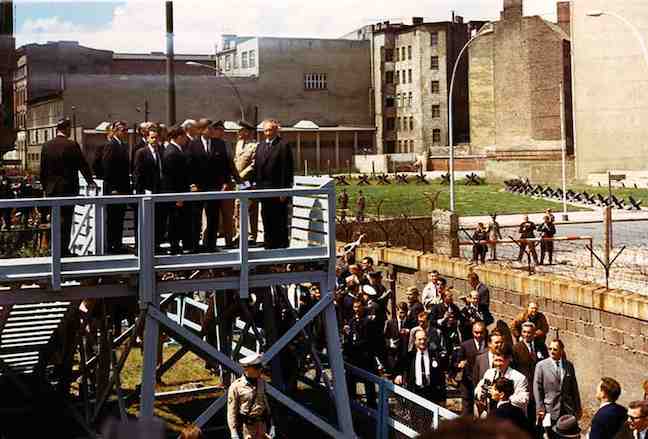1961 Berlin Wall Built Built
From the time of the Vienna summit, East German exodus to West Germany began to skyrocket. The Soviets began to talk about war, and in July the Soviets detonated a 60-megaton atomic bomb, the largest atomic bomb up to that point. On August 13th 1961, the Berlin Wall went up, dividing East and West Berlin, ending the flow of refugees out of East Germany and dividing the city..
The construction of the Berlin Wall in August 1961 was a direct result of the escalating tensions between the Eastern and Western Blocs during the Cold War. Following World War II, Germany was divided into four zones controlled by the United States, the United Kingdom, France, and the Soviet Union. Berlin, despite being located within the Soviet zone, was also divided into four sectors.
The division of Berlin eventually led to the Berlin Blockade in 1948-1949, during which the Soviet Union attempted to force the Western powers out of West Berlin by cutting off all access. In response, the Western Allies initiated the Berlin Airlift, successfully delivering essential supplies to the city's inhabitants.
Over time, the ideological differences between East and West became more pronounced, and the border between East and West Germany hardened. East Germany (the German Democratic Republic, or GDR) was a Soviet satellite state, while West Germany (the Federal Republic of Germany, or FRG) aligned closely with the US and its allies. The relatively porous border between East and West Berlin enabled a significant number of East Germans, particularly skilled workers and professionals, to defect to the West in search of better opportunities and political freedom.
To address this "brain drain," the East German government, with Soviet support, began constructing the Berlin Wall on August 13, 1961. East German soldiers and workers quickly erected a barrier of barbed wire and concrete blocks, effectively sealing off West Berlin. The wall was later reinforced with guard towers, minefields, and other security measures to deter East Germans from attempting to escape to the West.
The Berlin Wall significantly impacted the lives of Berliners, particularly those with family and friends on the other side of the city. It severed not only geographic connections but also economic, social, and cultural ties that had existed for centuries. The wall became a symbol of oppression and a stark reminder of the ideological conflict of the Cold War era. Thousands of East Germans risked their lives to cross the wall, and it is estimated that approximately 140 people died in the process.
 >
>